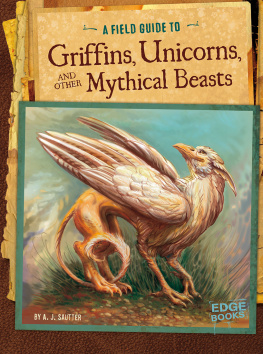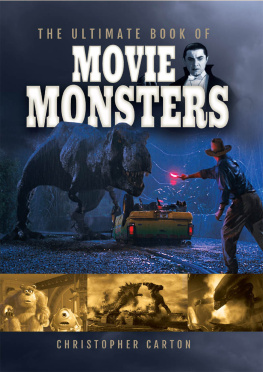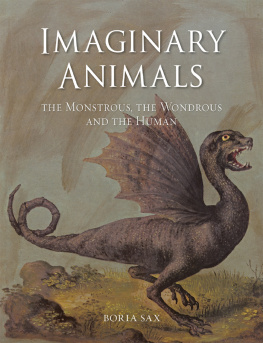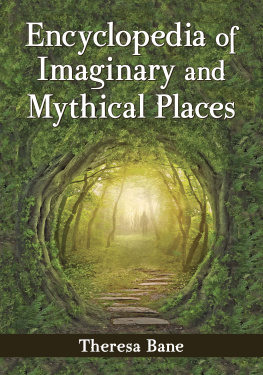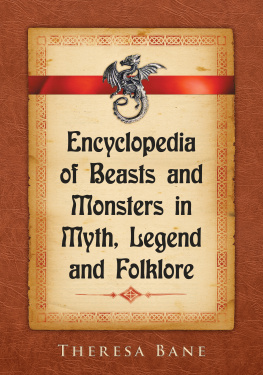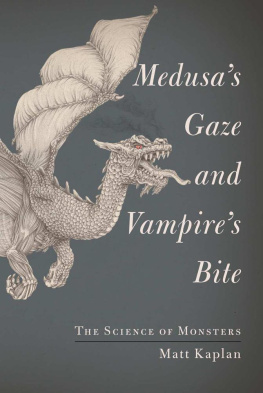David D. Gilmore - Monsters: Evil Beings, Mythical Beasts, and All Manner of Imaginary Terrors
Here you can read online David D. Gilmore - Monsters: Evil Beings, Mythical Beasts, and All Manner of Imaginary Terrors full text of the book (entire story) in english for free. Download pdf and epub, get meaning, cover and reviews about this ebook. year: 2003, publisher: University of Pennsylvania Press, Inc., genre: Romance novel. Description of the work, (preface) as well as reviews are available. Best literature library LitArk.com created for fans of good reading and offers a wide selection of genres:
Romance novel
Science fiction
Adventure
Detective
Science
History
Home and family
Prose
Art
Politics
Computer
Non-fiction
Religion
Business
Children
Humor
Choose a favorite category and find really read worthwhile books. Enjoy immersion in the world of imagination, feel the emotions of the characters or learn something new for yourself, make an fascinating discovery.

- Book:Monsters: Evil Beings, Mythical Beasts, and All Manner of Imaginary Terrors
- Author:
- Publisher:University of Pennsylvania Press, Inc.
- Genre:
- Year:2003
- Rating:5 / 5
- Favourites:Add to favourites
- Your mark:
- 100
- 1
- 2
- 3
- 4
- 5
Monsters: Evil Beings, Mythical Beasts, and All Manner of Imaginary Terrors: summary, description and annotation
We offer to read an annotation, description, summary or preface (depends on what the author of the book "Monsters: Evil Beings, Mythical Beasts, and All Manner of Imaginary Terrors" wrote himself). If you haven't found the necessary information about the book — write in the comments, we will try to find it.
Monsters: Evil Beings, Mythical Beasts, and All Manner of Imaginary Terrors — read online for free the complete book (whole text) full work
Below is the text of the book, divided by pages. System saving the place of the last page read, allows you to conveniently read the book "Monsters: Evil Beings, Mythical Beasts, and All Manner of Imaginary Terrors" online for free, without having to search again every time where you left off. Put a bookmark, and you can go to the page where you finished reading at any time.
Font size:
Interval:
Bookmark:
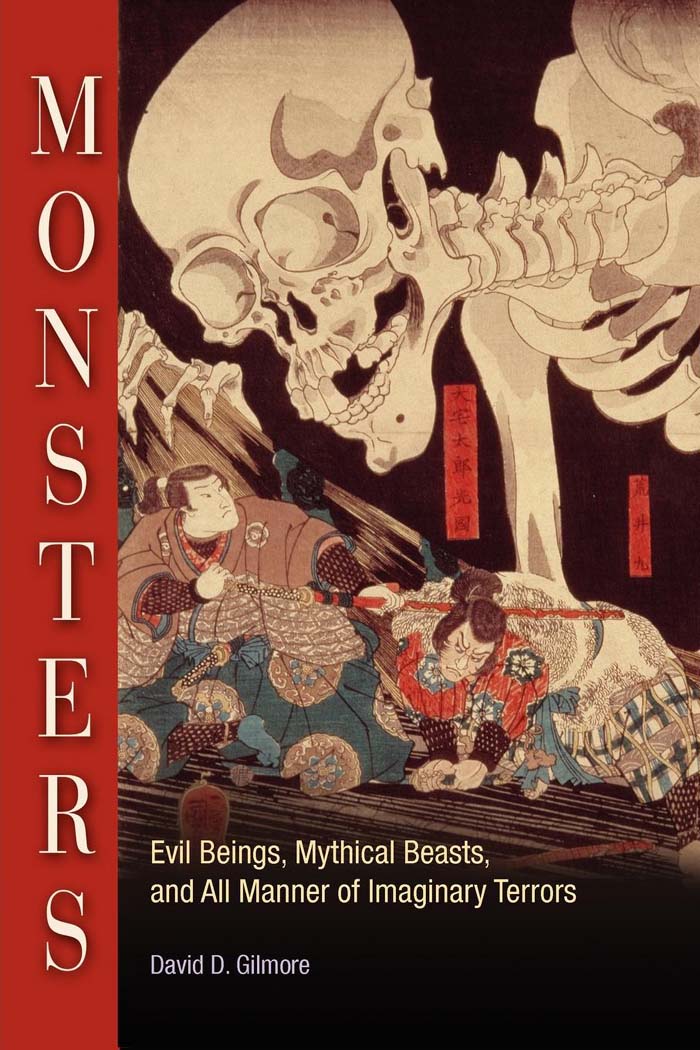
Copyright 2003 University of Pennsylvania Press
All rights reserved
Printed in the United States of America on acid-free paper
10 9 8 7 6 5 4 3 2 1
Published by
University of Pennsylvania Press
Philadelphia, Pennsylvania 191044011
Library of Congress Cataloging-in-Publication Data
Gilmore, David D., 1943
Monsters : evil beings, mythical beasts, and all manner of imaginary terrors / David D. Gilmore.
p. cm.
ISBN 978-0-8122-2088-9
Includes bibliographical references and index.
1. Monsters. 2. Animals, Mythical. I. Title
GR825 .G55 2003
001.944dc21
2002028505
To Aggie and Jules,
and all the monster-slayers
Like so many other eternal adolescents, I am fascinated by imaginary monstersespecially the luscious ghouls and extraterrestrials in sci-fi literature and Hollywood films. They always inspired both dread and attraction in me, or perhaps empathy is a better word. So, given this morbid interest, the present book may represent a coming to grips with a juvenile obsession that has endured well into middle age. The appeal of monsters reaches a peak in childhood, when all prudent boys and girls check under their beds at night for demons, but it lingers well into adulthood. In those who are seriously weirda category I admit belonging toit evolves into a luxurious repertory of fantasies, anxieties, and phobias.
I think the immortal monster is irrefutable proof, if such were needed, for the existence of Freuds aggressive instinct, the reality of an impulse toward violence. As my research has shown, people everywhere and at all times have been haunted by ogres, cannibal giants, metamorphs, werewolves, vampires, and so on. In Africa people believe in were-lions, and in the South Seas there are man-eating were-sharks, not to mention cannibal ogres among the American Indians and the bellowing ape-men of the Far East! Since these nightmares are universal, they must reveal something about the human mind. Monsters share certain characteristics no matter where they appear: they are always aggressive, gigantic, man-eating, malevolent, bizarre in shape, gruesome, atavistic, powerful and gratuitously violent. In rendering their fantasies in art and folktale, people have been both troubled and relieved.
The evidence indicates that monsters are more complicated than being reducible to the uni-dimensional id forces of sex and aggression. However terrible, they are not just metaphors for beastliness: their vast powers inspire veneration as well as repugnance. While we struggle against them, monsters also instill awe and even a grudging respect. This stark dualism half horror, half reverenceinspired me to write this book.
Delving into the topic, I sought and received advice from many sensible people who indulged me as best they could. Among those who helped were Howard Bloch, Stanley Brandes, Uradyn E. Bulag, Jeffrey Jerome Cohen, John R. Colombo, Marc Edelman, Richard Gottlieb, Marie-France Gueusquin, Anita Moskowitz, Susan C. Rogers, John Shea, Aimeric Vacher, and Bonnie Wheeler. Lee Stern, quite fortuitously, tipped me off to the existence of the Park of Monsters in Bomarzo, Italy, and provided some charming photographs he had taken there. Federico Zanatta helped with some Italian translations on the same topic, and Francesca Zanatta tracked down and sent me materials in obscure Italian journals.
In Spain, Salvador Rodrguez Becerra was heroic in confronting monsters and demons in fiestas throughout the peninsula from Jaca to Seville, and in penetrating the lair of the famous Tarasca dragon of Toledo. He was also a source of much knowledge and wise insights as well as a splendid guide to local gastronomy. Our Spanish helpmates, Maria del Carmen Medina Roman, and Sol Tarrs Chamorro, supplied endless enthusiasm and practical assistance, as well as superb field notes and photos for which I am eternally grateful. In addition, Ms. Medina offered herself up to be swallowed by the ferocious Tarasca of Las Hacinas during carnival, and so experienced first hand being inside the belly of the beast!
In Toledo I received splendid support in locating the Tarasca in its current lair from Gerardo Fernndez Jurez, Juan Estanislao Lpez Gmez, and Fernando Martnez Gil. The latter also supplied me with marvelous photos of the beast in action. Also of great help to me in Spain were Julio Porres de Mateo and Jos Guillermo Afn Conde. My old friend, the wise and courtly Carmelo Lisn Tolosana, provided unstinting support and comfort during the brief time I spent in Aragon. For their help in shepherding the manuscript into finished form and locating so many wonderful pictures, I want to thank Peter Agree, Samantha Foster, and Bruce Franklin of the University of Pennsylvania Press.
Finally, I want to thank my children, Agatha Emily and Julian Jay, for their forbearance in putting up with my irascibility, which at times was truly monstrous. Aggie also assisted in translating some difficult material from French. Jules informed me knowledgeably about monsters in young peoples literature while researching his own school project on sea serpents like father like son. I want also to commend my colleague at Stony Brook University, Fred Grine, Chair of Anthropology, for providing me enough leave time to complete the fieldwork.
Last but not least, the following institutions provided generous research grants that permitted me to go to Spain and complete the writing: the National Science Foundation, the Program for Cultural Cooperation between Spains Ministry of Education, Culture, and Sports and United States Universities, and the American Philosophical Societys Franklin Fund. I am also indebted to Stuart Plattner of the NSF, who went beyond the call of duty and graciously permitted various changes to my original budget to allow for the contingencies of the research. As I was in the final stages of my research I got word that I had received a J. S. Guggenheim Fellowshipa most prodigious honor for which I am humbly grateful. The Fellowship permitted an undisturbed conclusion of my work.
To all those mentioned above and all the others who dared look into the abyss with me, I give my heartfelt thanks.
Whoever fights monsters should see to it that in the process he does not become a monster. And when you look into an abyss, the abyss looks back into you.
Friedrich Nietzsche, Beyond Good and Evil
The constitution of the monster implies that taboos have been transgressed to promote adventures into the realm of impossible possibilities.... It is an evasion at once liberating and intoxicating, lifting from life all barriers confining the species. And so, the monstrous is exciting.
Jean Brun, Le Prestige du monstre
The dream of reason produces monsters.
Francisco Goya, Caprichos
The mind needs monsters. Monsters embody all that is dangerous and horrible in the human imagination. Since earliest times, people have invented fantasy creatures on which their fears could safely settle. Examples from Western lore are Frankenstein and Dracula, all those dragons of the Middle Ages, Hollywoods ghouls and extraterrestrials, and of course the sharp-toothed bogeymen that hide under childrens beds (and adults beds, too). Classic works, from the Grimm brothers to recent psychological studies (Bettelheim 1976; Beaudet 1990; Carroll 1990; Warner 1998), demonstrate the rich variety and primal power of the imaginary evil creature as a cultural metaphor and literary device in folklore, fiction, art, dreaming, and everyday fantasy.
Font size:
Interval:
Bookmark:
Similar books «Monsters: Evil Beings, Mythical Beasts, and All Manner of Imaginary Terrors»
Look at similar books to Monsters: Evil Beings, Mythical Beasts, and All Manner of Imaginary Terrors. We have selected literature similar in name and meaning in the hope of providing readers with more options to find new, interesting, not yet read works.
Discussion, reviews of the book Monsters: Evil Beings, Mythical Beasts, and All Manner of Imaginary Terrors and just readers' own opinions. Leave your comments, write what you think about the work, its meaning or the main characters. Specify what exactly you liked and what you didn't like, and why you think so.


